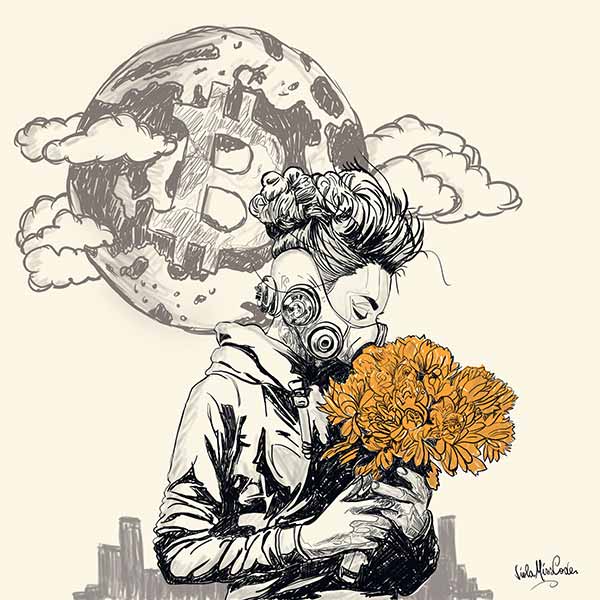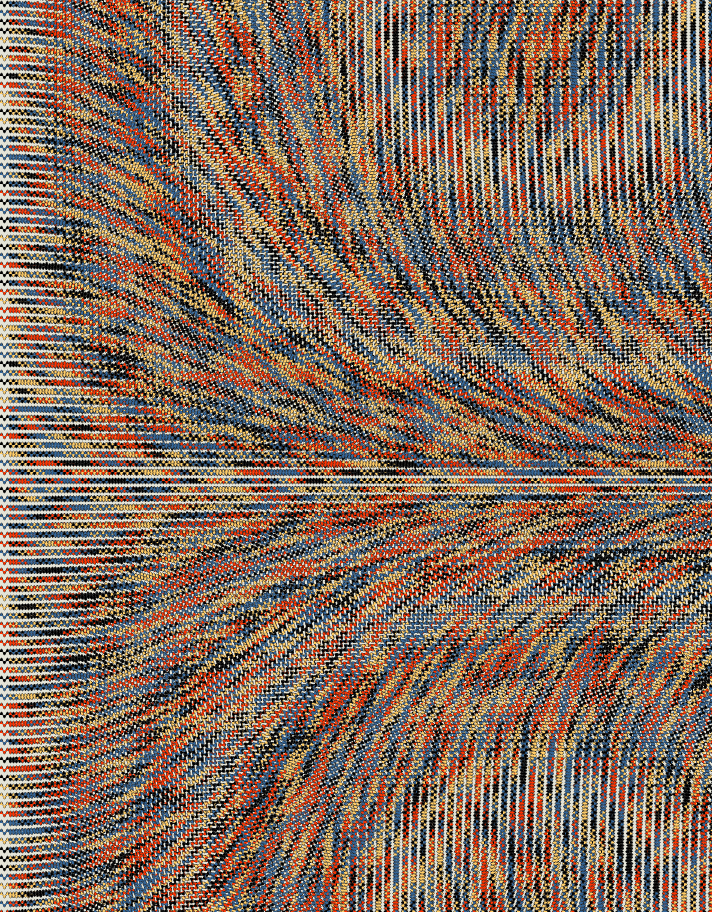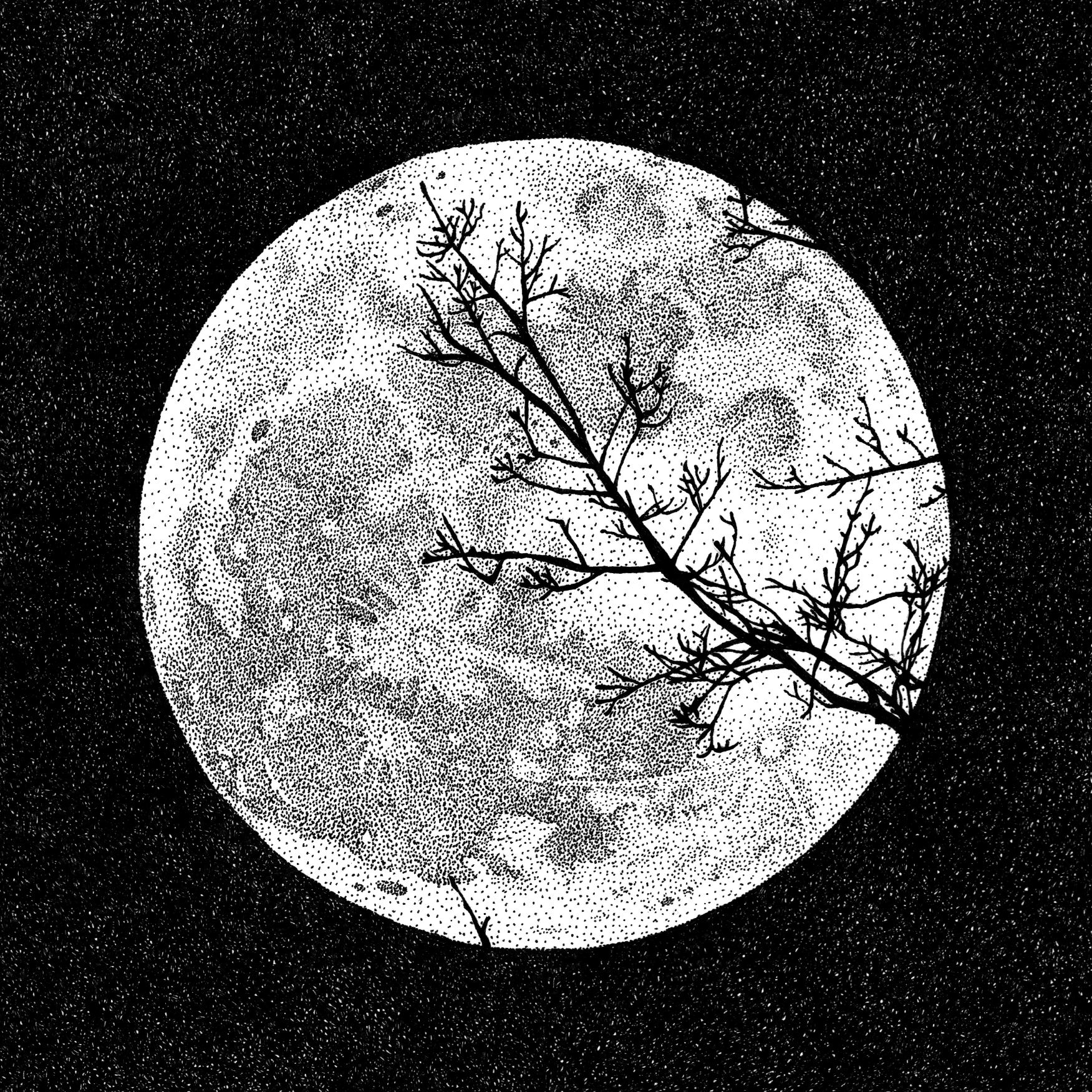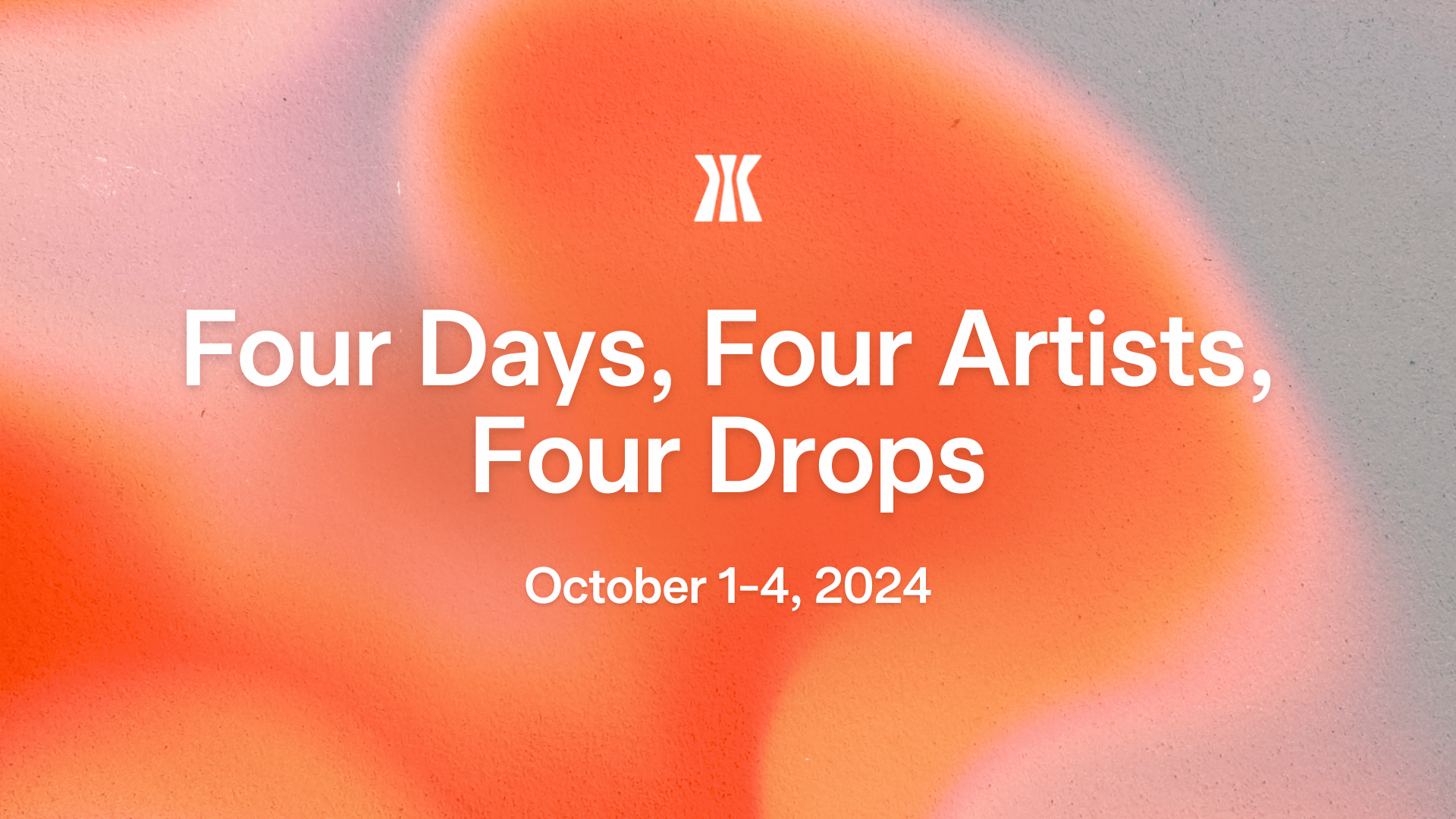Figurative art, which focuses on representing real-world subjects, has been a key part of art history. Whether it's the elegance of Michelangelo’s David or the intense emotions in Lucian Freud’s portraits, this style beautifully captures human experiences and everyday life through the depiction of the body and familiar scenes. Let’s meet four Gamma Partner Artists who explore figurative art.
Hafftka

On figurative art, Hafftka reflects, "I was always figurative, it came naturally. Very rarely did I feel that an abstract expressed me well." This connection to the human form seems inherent in his approach, where abstraction seldom resonates as deeply as the direct representation of figures.
Exploring how he captures the human form, whether through live models, photographs, or his imagination, Hafftka reveals, "For many years I worked from my imagination, except for a few occasions where I painted from life, and even more rarely from photographs. Today, I sometimes use AI to create my plan."
Emotion plays a significant role in his figurative works, although not always in the form of a clear narrative. "I would say there is rarely a narrative to my pieces, and there are definitely emotions. I don't plan for my work to express specific states of mind, but in the end, they do, although sometimes the audience interprets it differently," he explains. This ambiguity invites viewers to find their own meaning, making each piece open to varied interpretations.
Hafftka's awareness of the long history of figurative art is evident when he reflects on how his work fits within this tradition. "I am absolutely inspired by old as well as contemporary artists. This does not mean that I try to paint in their style, but I learn from them and I try to equal them in the quality of my work." His respect for the masters who came before him is palpable, yet his goal is not to imitate but to maintain a standard of excellence that honors their influence.
When discussing his medium and its impact on his creative process, Hafftka shares a story about one of his digital paintings: Robin Hood and the Second Amendment. "It is a digital painting where I created everything from my imagination and did not use any prepared images. I let my mind wander as I was working and only at the end did I understand what the work was about. I love this kind of process, it is where I feel completely creative from start to finish." The title, added only after the painting was complete, reflects the sense of discovery that accompanies his creative journey, as well as the symbolic interplay between imagery and meaning.
This same piece, Robin Hood and the Second Amendment, launched on Bitcoin, holds a special place in Hafftka's portfolio. "I love this kind of process," he reiterates, "because it is where I feel completely creative from start to finish." The imagery of people holding guns, yet not engaging in violence, evokes a nuanced interpretation of power, responsibility, and humanity.
Finally, when asked what advice he would offer to aspiring figurative artists, Hafftka's response is direct and insightful: "Work from your insides, be honest with yourself, and don't let others tell you what is good."
Ticklish

When it comes to figurative artwork, Ticklish’s response is refreshingly straightforward: "It is difficult to get right."
Ticklish’s approach to capturing the human form is highly traditional, working from live models in short sessions. "I work from live models in relatively short poses— from 3 to 30 minutes," they explain. The brevity of these poses demands speed and precision, a focus that shapes the structure and spontaneity of each piece.
Emotion and narrative, while not central during the initial drawing process, emerge as important elements afterward. "When I draw the figures, I am mainly preoccupied with structure and proportion. Sometimes I will make sure to capture a model's expression, but the narrative comes afterward. Drawings that don't have a hint of narrative are generally discarded," Ticklish shares.
Drawing inspiration from both historical and contemporary art movements, Ticklish highlights the influence of Post-Impressionists and Fauvists, particularly Henri Matisse and Paul Cézanne. "I chiefly draw inspiration from the Post-Impressionists and Fauvists in their use of non-naturalistic colour," they note. Additionally, their use of scavenged materials is reminiscent of Kurt Schwitters, whose use of ephemera—scraps of card and packaging—resonates with Ticklish’s own approach to materials.
This resourcefulness with materials ties directly to how Ticklish’s medium impacts their work. "I use inks and watercolours, media which dry quickly and are unforgiving of reworking. So I work quickly, and minimise my impact on the paper as much as possible," they explain. This immediacy of process is most apparent in their ‘ghost’ drawings, where white ink is applied to highlight the brightest points of the figure, creating an ethereal and delicate portrayal. "To get my eye in, I need to be very aware of the brightest points of the figure—usually a ball joint like a knee or elbow, or jewellery."
One of Ticklish’s most notable pieces on Bitcoin is Still Thinking About It (2023), a ‘ghost’ figure drawn during a 25-minute live pose. "It was drawn on a scrap of red card I had found years previously," they recall. The use of black ink with a brush pen added a "harsh look" to the figure, whose head was turned away from the artist, creating a sense of melancholy. "The contrast between the bright red background and the cold, distant figure evokes a feeling of isolation," Ticklish adds, giving this piece a striking emotional depth.
For aspiring artists drawn to figurative art, Ticklish offers simple yet valuable advice: "Join a figure drawing group and attend it regularly. Don’t get hung up on materials and media, just use whatever you have in supply and learn not to be precious about pieces that don’t work." Their emphasis on regular practice and flexibility with materials underscores the importance of persistence and adaptability in mastering figurative art.
Ticklish’s approach, rooted in discipline, creativity, and an eye for detail, reflects the challenges and rewards of figurative art, offering both a technical and philosophical perspective on this timeless artistic form.
ViolaMissCode

Regarding figurative art, ViolaMissCode shares, "I have always loved art in all its many forms, but figurative art has always been my favorite. I honestly don't know why... maybe because I like to imbue my drawings with meaning and figurative art allows me to do so in a strong and clear way." This connection between her love for storytelling and the human form has been central to her work, allowing her to convey messages with depth and clarity.
Her process of capturing the human form is particularly intriguing. Unlike traditional artists who rely on models or photographs, she begins with AI-generated characters. "I start by generating the characters with AI, a process that usually takes several generations until I find something that inspires me, then I completely redraw the characters by hand starting from zero, creating my composition, modifying them and giving them new life and meaning," she explains. The hand-drawn characters evolve through freehand techniques, blending imagination with digital inspiration, creating a unique synthesis of traditional and modern methods.
Emotion and narrative play a fundamental role in her work. "My drawings are inspired by the stories and history of Bitcoin and Cypherpunks culture. I create each of my drawings as a poem: sometimes they tell something in a more direct way, sometimes they 'go around it,' but I always want to evoke emotions on various levels and communicate a message of freedom," she reflects. Her art is a reflection of her ideals, where emotion and narrative interweave to create powerful visual stories that celebrate the values of the Cypherpunk movement.
In considering how her work fits within the broader context of figurative art movements, Viola MissCode says, "I like to think of my work as a technological evolution of street art: it comes from the need to freely express our culture, but my public canvas is no longer a wall—it is the blockchain, free from censorship and immutable." Her inspirations are vast, ranging from street art and graffiti to pop art, tattoos, and comics. Names like Banksy and Andrea Pazienza come up as key influences, yet her vision is distinctly her own, blending countercultural aesthetics with digital technology.
Her use of medium and technique further highlights her connection to Bitcoin and Cypherpunk culture. "I draw mainly in black and white with colored details. The colored details are almost always orange flowers (representing Bitcoin and the culture of Ordinals), sometimes other details like blue butterflies or pink diamonds (representing rare sats and the culture of digital collecting). I never use pure white, to give a timeless flavor to my drawings." These specific details and symbols serve to enhance the stories she tells, embedding each piece with layers of meaning.
One of Viola MissCode’s proudest accomplishments is her piece Bit-Rioter n62 'Fuck the System with Poetry,' which holds a special place in her body of work. "It is the first and only animated GIF engraved on a Naka Pali sat. It is a tribute to Satoshi and is inspired by the symbols of these two satributes," she shares. The piece features orange flowers blooming from a laptop to represent Ordinals and Bitcoin, with butterfly wings symbolizing both the perfection of numbers and the far-reaching impact of Bitcoin. "A butterfly effect that changed the world," she adds, perfectly capturing the transformative power of the technology that fuels her art.
For aspiring artists, Viola states, "I would recommend finding your own artistic language because, in my opinion, originality is the most important weapon in art. Then, always continue to improve in technique and content: never stop looking for inspiration and, above all, never give up! But this applies to everything—in life as in art!"
Rocketgirl

Rocketgirl’s journey into the world of figurative art began with a deep appreciation for the beauty and complexity of the human body. She describes it as "nothing more miraculous and beautiful" than the forms we inhabit, a sentiment that serves as a foundation for her artistic expression.
To capture the human form, Rocketgirl often begins with a live model, photographing them to later use as reference. She also finds inspiration in vintage Playboy magazines, blending these influences to create her unique, dynamic figures. Each piece is infused with movement and energy, yet the figures are intentionally blinded, forcing them to look inward and explore their inner selves. “They are shielded from connecting with others through sight alone,” she explains, challenging traditional notions of the human gaze and self-awareness.
Her work delves into the otherworldly aspects of the body, using the obscured eyes as a metaphorical tool. This approach is inspired by Mogdalani’s philosophy: "When I see their souls, I will draw their eyes too." Rocketgirl also draws from the works of Richard Patterson, Jenny Saville, and Tracey Emin, who influence both her conceptual and stylistic choices.
The medium she chooses for her art is as fluid as her themes. Working across four different techniques, she employs a mixed media approach, allowing the needs of each piece to dictate the methods she uses. “I create with freedom, mixing whatever the piece requires to find that energy,” she says, embodying a versatile and adaptive creative process.
One of her standout pieces on Bitcoin is EPOCH, a layered collage and digital painting inspired by a recent trip to Berlin. The artwork symbolizes the end of an era, capturing a personal and collective transformation. For Rocketgirl, EPOCH holds a special place in her portfolio, showcasing the depth and complexity of her vision.
To aspiring figurative artists, she offers simple yet profound advice: “Be free, have fun, and don’t be afraid of the human form in all its variations.” Embracing this openness is essential to navigating the intricate and rewarding path of figurative art.




